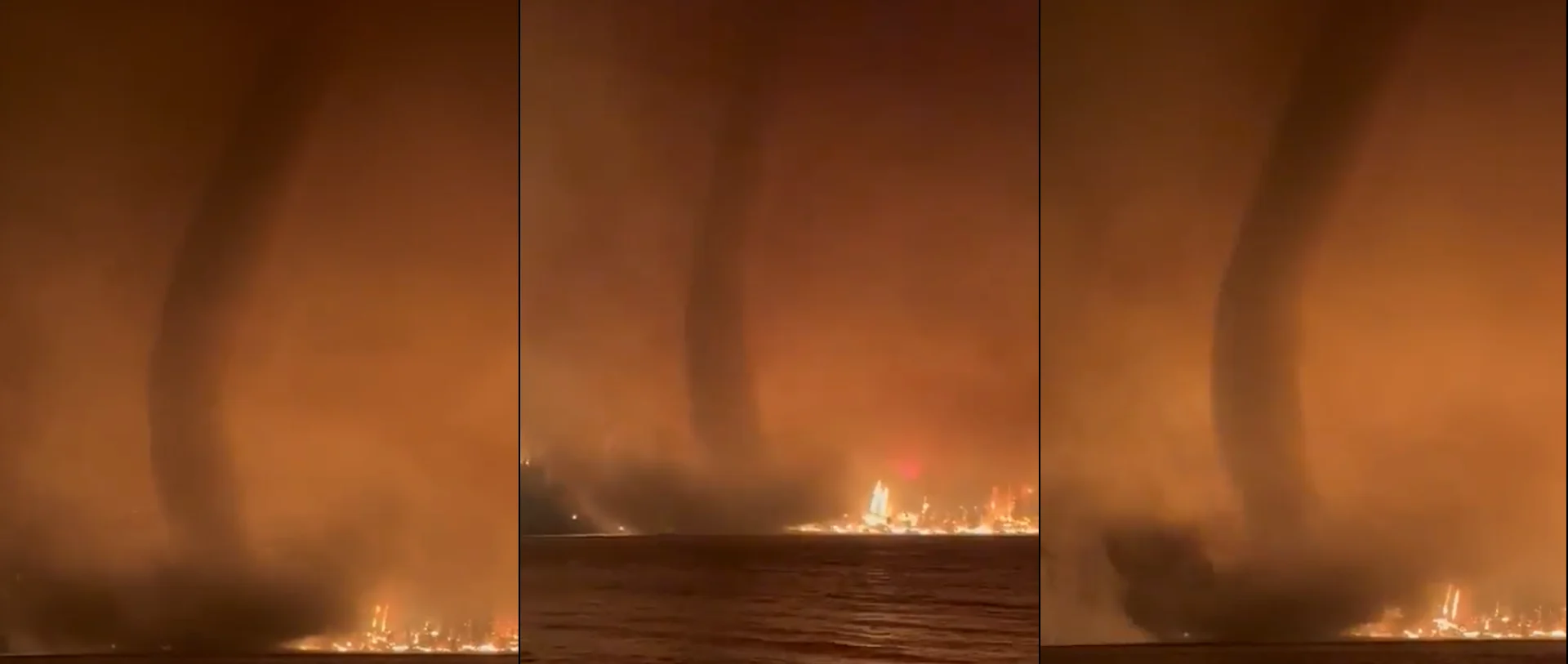
Experts confirm huge B.C. blaze spawned a fire-generated tornado
Researchers spent months combing through evidence to classify Canada’s first fire-generated tornado back in August
For the first time, researchers with Western University’s Northern Tornadoes Project (NTP) confirmed that a fire-generated tornado formed over interior British Columbia during a wildfire last summer.
This was an honest-to-goodness tornado, the NTP said, making it distinctly different from more common fire whirls—those short-lived but intense whirls that can develop amid a raging blaze.
DON’T MISS: Officials already preparing for potentially active 2024 wildfire season in B.C.
This rare fire-generated tornado formed over the edge of Gun Lake near Gold Bridge, B.C., in the pre-dawn hours of August 18, 2023. The tornado formed as crews worked to control a wildfire raging on the hills nearby, about 70 km northwest of Lillooet.
Fire crews across the lake captured an impressive video of the event. The tall, slender tornado rose hundreds of metres over Gun Lake’s shoreline, its thick funnel and robust spray illuminated by the orange glow of the surrounding blaze.
The NTP’s investigation cites a careful study of the event and concluded that it was a bona fide tornado based on several factors, including:
a “spray vortex” over the lake surface
the visible condensation funnel extending into the convective clouds above
the location of the tornado’s formation correlating with previous research on fire-generated tornadoes
It’s a remarkable finding that adds more curiosity to a historic wildfire season that ravaged vast swaths of the Canadian landscape in 2023.
But…how did it happen? The environment around and above a wildfire can sometimes imitate the explosive conditions present on a day when severe thunderstorms are possible.
Wildfires produce intense heat that rapidly rises through the atmosphere above the inferno. This powerful lifting motion creates strong updrafts that mimic the rising air we’d see on a hot day.
This process often forces small fire whirls to develop within the blaze. These fire-filled whirlwinds are more similar to dust devils than tornadoes, forming as rising air stretches and spins. They’re short-lived and relatively small, but they pose a serious threat to nearby firefighting crews.
Under certain conditions, the extreme heat of the fire can generate pyrocumulus and pyrocumulonimbus clouds—towering clouds, showers, and even thunderstorms brought into existence by the inferno itself.
Even rarer conditions yet can force the development of a tornado within that convection, giving birth to the exceptional fire-generated tornado that NTP researchers just confirmed in B.C. last August.
"This is the first such fire-generated tornado recorded by NTP, and appears to be the most thoroughly documented fire-generated tornado so far in Canada," the NTP said in its report.
MUST SEE: Unprecedented fire year: experts warn of longer, more destructive seasons

A summary of the EF-3 equivalent fire whirl generated by California's Carr Fire on July 26, 2018. (NWS)
We have some precedent for this happening south of the border. The U.S. National Weather Service first confirmed a fire-generated tornado near Redding, California, during the horrific Carr Fire in July 2018. Meteorologists surveying the damage estimated maximum winds of 140 mph, making the ‘firenado’ the equivalent of an EF-3.
Two years later, the NWS issued a tornado warning for a ‘fire-induced tornado’ in a rural section of Lassen County in northern California.
“A pyrocumulonimbus from the Loyalton Wildfire is capable of producing a fire induced tornado and outflow winds in excess of 60 mph was located south of Chilcoot, and is nearly stationary,” the NWS said in the first-of-its-kind warning on August 15, 2020.
Header image of the tornado courtesy of the B.C. Wildfire Service.











